One Man’s Crusade to End Horse Racing in America
News & Opinion
Like many other animal rights activists, Patrick Battuello doesn’t care about horses any more or less than he does other animals, so why is this 48 year man from upstate New York running the only organization in the country whose sole mission is to end horse racing?
It started in the summer of 2012 when the NY Times published a series of articles exposing animal abuse at the top levels of the horse-racing industry. After learning about the abuse, Mr. Battuello searched online for ways to fight the industry and was stunned to discover a lack of information and leadership.
Not only has he, in just two years, filled these voids with his organization Horseracing Wrongs, he has also become the go-to person for advocacy groups and reporters who need detailed information about the “sport.” In addition, his group’s website is serving as a platform where anti-racing activists from around the country can collaborate.
Mr. Battuello and his colleagues at Horseracing Wrongs know that they can’t influence the racers, breeders and others who make a living off the backs of the horses, but they have identified one way to cut into their bottom line: convincing customers that their “$2 bet” can’t justify the widespread death on the tracks – over 2,000/year, in fact.
In their “Plea to Bettors,” Horseracing Wrongs recommends gambling options, like casinos and lotteries, that don’t rely on animal abuse. It also succinctly describes the abuses built in to the industry:
Your Turn
When in spotlight, race horses are pampered and massaged to make the public feel good about racing. But, behind the scenes, they spend their short lives being drugged and abused. To make matters worse, most of the horses who survive the track but can no longer make money for their owners are slaughtered for meat. Like all animals used for entertainment and profit, these horses are treated like commodities, not companions. Please see Horseracing Wrongs to learn more about this cruel sport and the group’s creative efforts to end it.



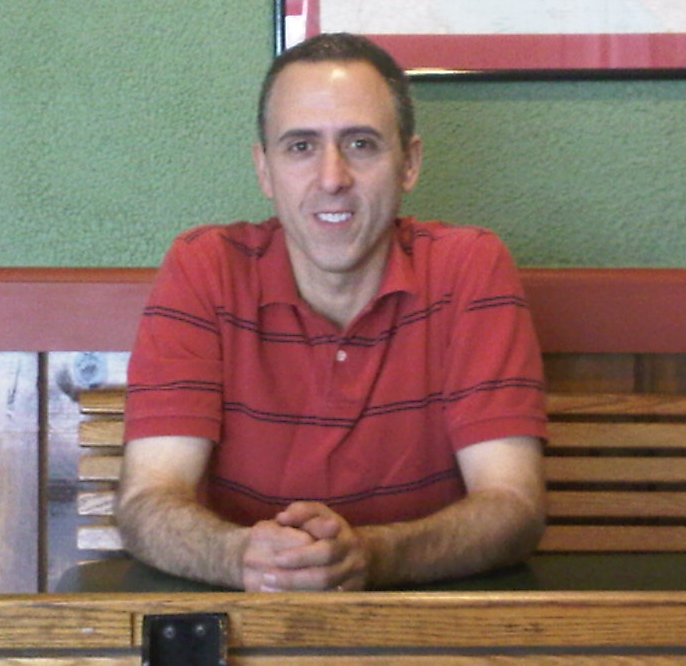
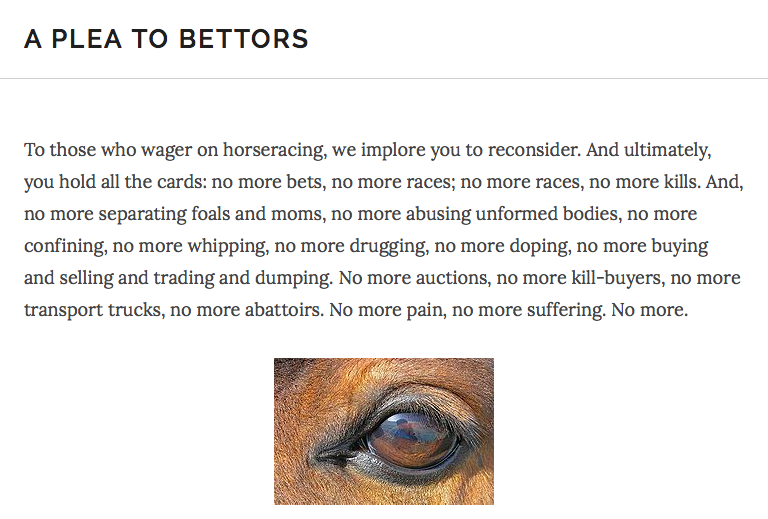

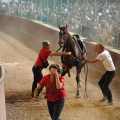
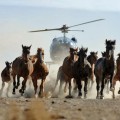
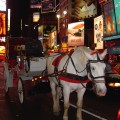
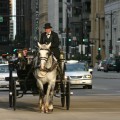
Patrick Battuello chose horse racing because it chose him. He is out to make a name for himself and animal cruelty was the obvious outlet. “In behalf of Animals” a blog he started fizzled out with little to following. In doing that blog he figured out there is a following of horse racing haters. Mostly crazy cat ladies who have no other choice in life but to hate everything. So he stumbled upon the goose that laid the golden egg. Horse racing. The chic thing to hate.
He cares little about horses. Other than the blog I don’t think he has done one direct thing to help a horse in need. Most likely he will not deny that fact. FAME is his main objective in this battle against horse racing….
NOTHING has changed since this report was issued. These horse “lovers”, apolgists for the industry, are either totally ignorant and uninformed, stupid or simply in denial.
Survey: Racetracks report 5,000 horse deaths from 2003-2008 (US) (report : true death toll much much higher). Countless other deaths went unreported because of lax record keeping, the AP found in the broadest such review to date.
Survey: Racetracks report 5,000 horse deaths from 2003-2008
http://news.yahoo.com/s/ap/20080614/ap_on_sp_ot/rac_euthanized_horses
By JEFFREY McMURRAY, Associated Press Writer Sat Jun 14, 4:15 PM ET
LEXINGTON, Ky. – Thoroughbred racetracks in the U.S. reported more than three horse deaths a day last year and 5,000 since 2003, and the vast majority were put down after suffering devastating injuries on the track, according to an Associated Press survey.
Countless other deaths went unreported because of lax record keeping, the AP found in the broadest such review to date.
The catastrophic breakdown of filly Eight Belles at the Kentucky Derby last month made the fragility of a half-ton horse vivid for the millions watching, but the AP found that such injuries occur regularly in every racing state. Tracks in California and New York, which rank first and sixth in thoroughbred races, combine to average more than one thoroughbred death for every day of the year.
Questions about breeding, medication, synthetic surfaces versus dirt and other safety issues have dogged the industry for some time, and a congressional panel has asked key players in the sport to testify this week about its direction, particularly the influence of steroids.
The AP compiled its figures from responses to open records inquiries sent to the organizations that govern the sport in the 29 states identified by Equibase Co., a clearinghouse for race results, as having had at least 1,000 thoroughbreds start a race last year.
Arkansas, Michigan, Nebraska said their organizations don’t track fatalities at all, and only one of Florida’s three main thoroughbred tracks provided numbers. There were wide differences among the other states in what types of deaths are monitored and how far back the records go.
“Nobody really knows how big of a problem it is,” said Rick Arthur, California’s equine medical director. “They just know it’s a big problem.”
When a horse breaks a leg — let alone two, as Eight Belles did — often the only choice is to euthanize the animal. A thoroughbred’s bones are thinner than most breeds. Usually it’s not possible for the horse to lie down for long periods because that could disrupt the blood flow to the arteries in the lower limb, causing an extremely painful hoof infection called laminitis.
Barbaro, who won the Kentucky Derby in 2006, broke down in the Preakness and was euthanized with laminitis several months later after a gallant effort to save him.
Despite the regularity of such breakdowns and the money involved in the sport, no one is certain how many horses are lethally injected on the nation’s tracks each year. The Jockey Club, which registers all North American thoroughbreds, did not know of another comprehensive, state-by-state tally of fatalities at tracks before the AP’s, said Bob Curran, a Jockey Club vice president.
Larry Bramlage, the on-call veterinarian at Churchill Downs in Louisville, Ky., who made the grim announcement that Eight Belles had been euthanized after the Derby, said fatality numbers don’t seem to be dropping, despite major medical advancements. To Bramlage, that suggests racing injuries are becoming more frequent because vets are already pulling the most injury-prone horses before post time.
“We’re able to pick them up better, with digital X-rays, bone scans and MRIs, which give us the information we need to take those horses out of training,” Bramlage said. “In spite of that fact, we’re not denting the total number of deaths.”
California officials became alarmed in 2005 when the number of thoroughbred racing deaths there spiked by nearly 50 percent from just two years earlier. Last year, 314 horses — 261 of them thoroughbreds — died at California’s tracks, including those hurt in training or barn accidents, and a few that suffered other injuries or medical complications.
“Just seeing the totals and the recurrent theme, it’s eye-opening,” said Bon Smith, assistant director of the California Horse Racing Board.
Beginning this year, California has mandated that all its major tracks replace their dirt surface with a synthetic mixture found in some studies to be safer for horses and jockeys.
While California’s thoroughbred fatalities are nearly triple those reported by any other state, its warm weather and bounty of tracks make it the nation’s busiest racing state. And it has received high praise across the industry for the way in which it tracks deaths — every death that occurs on the public grounds of a California racetrack is recorded in detail, largely through veterinary reports.
Some other major racing states have no records of fatalities that occur during morning training exercises, even those that happen on the tracks where races are run in the afternoon. Kentucky listed 228 deaths since 2003, but none of them from training accidents, which in some states that track them account for nearly a third of the total.
Other states, such as Colorado and Iowa, run mixed breed meets, in which quarterhorses might appear in one race a day while thoroughbreds make up most of the rest. Often, these states list the deaths only by meet, not breed, although veterinarians say the more muscular torsos and spindly ankles of thoroughbreds make them more susceptible to injury.
Many states that do closely track horse deaths haven’t been doing it for long. New Mexico counted 52 deaths in 2007, but its racing commission said it had no records before that.
Some states that do monitor deaths don’t differentiate between horses that die in freak accidents in their barns, for instance — the consensus is that such deaths are rare — and those that break down training or racing and are destroyed.
Such discrepancies have made the task difficult for Mary Scollay, a veterinarian at two Florida racetracks who has created a uniform national injury reporting system that aims to record every thoroughbred fatality. Scollay, who next month will become Kentucky’s equine medical director, said 65 tracks are participating in the program now, but only 30 have compiled a full year’s worth of data.
She declined to release the preliminary numbers, explaining the sample size is still too small to draw conclusions. It could take years, Scollay said, before major trends can be identified.
“Certainly we know more than we did last year at this time, and one fatal injury is one too many,” Scollay said. “We know we need to do better. I think within the last few weeks, there’s been a mobilization of the industry to do some pretty serious things.”
Those who own and handle the animals stand to lose plenty when a horse is put down.
Timothy Capps, a professor at the University of Louisville’s equine industry program, said most racehorses don’t carry mortality insurance. The ones that do typically carry only a fraction of their projected value as a stallion or mare, Capps said.
After the gruesome breakdown of Eight Belles, the Jockey Club created a national panel to examine safety, and the Kentucky Horse Racing Authority did the same on the state level.
Among the topics being reviewed are track surfaces, medication (particularly steroids), the use of the whip by riders, and whether — as Bramlage suggests — thoroughbreds are becoming less durable because they’re being bred to emphasize speed rather than stamina early in their careers.
“Those that do get hurt maybe get hurt worse because of their speed and size,” said Larry Jones, who trained Eight Belles. “A good big horse will outrun a good little horse, and they can be more fragile because their legs and joints have to hold a lot more.”
A House Energy and Commerce subcommittee has asked states for the figures they have on fatalities ahead of a hearing scheduled for Thursday.
Of particular interest to Congress is the influence of steroids, which were legal this spring in most racing states including Kentucky, Maryland and New York — which host the Triple Crown races.
Those advocating a steroid crackdown got ammunition when Big Brown, who easily won the Kentucky Derby and Preakness Stakes with the steroid Winstrol still in his bloodstream, ran the Belmont without it and finished last.
Rep. Ed Whitfield, R-Ky., said steroids should be banned — not regulated — in horse racing but questions whether the sport has the ability to police itself.
“There are enough people I have great respect for who say this industry is really beginning to be in trouble,” Whitfield said.
For all who are saying none of this happens, you are wrong or lying or both. I’m a horseman and I supported racing once upon a time…..until I just couldn’t anymore. The truth is, this guy just reports the deaths happening daily at tracks. The ugly truth is, these cokts are raced too young,bare given too many drugs, and unfortunately many end up with kill buyers. We can’t fix what us wrong with the industry until we acknowledge these problems. The insiders who continue to deny these issues are only delaying the inevitable. Look at the Tennessee Walking Horse industry, for years denying the soring abuses.Did that strategy work for them? No. Niw they face more legislation like the PAST Act, more criticism, a black eye, and a new competing registry that focuses on natural Tennessee Walkers. Racing industry needs to clean up it’s house.
In any sport there will be issues, but to stipulate that this results in animal cruelty is idiotic. Thoroughbreds are bred to run. It’s what they are born to do. We are talking about beauty and grace. Get over yourself….
Could this guy be more full of shit? He has NO IDEA WHAT HES TALKING ABOUT.. I’ll personally give him a backside tour and exclusive to show him how wrong and stupid he is.
Really? You are likely the only person who is a clueless nightmare. Denial or ignorant? Every single thing he wrote about happens and more. You really need to “know” before you respond.
You can be added to her ignorant list!!!
How many horses need to die for human entertainment before you would try to put a stop to horseracing? 1? 5? 10?
It’s about time! Can we donate?
Anytime someone is making a profit off of an animal there is likely to be abuse. People are insane when it comes to making money. Patrick is amazing in what he’s been able to do in such a short time.
Patrick makes a living profiting off of animals himself. He owns a restaurant that sells meatball subs, wings, sausage pizza and more. He delights in publishing dead horse porn. That is who he really is.
Little Anthony’s is a four-generation pizzeria that I purchased from my father long before becoming vegan. Although I have since passed the business down to my children, I am not embarrassed or ashamed of my past connection. Through Little Anthony’s funding, I was able to open the Capital Region’s first all-vegan restaurant – Food For Thought – back in 2007. Subsequently, I also started the area’s first all-vegan catering company. In addition, Little Anthony’s was the first and still only Albany-area pizzeria to offer vegan pizza, calzones, pasta dishes, subs, etc., and today is known at least as much for its vegan food as non-vegan (do a google search). I still advise my children on vegan offerings and remain proud of my contributions to vegan eating in upstate NY.